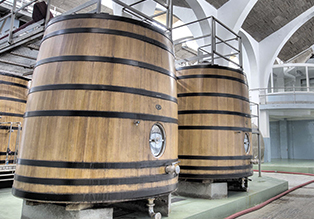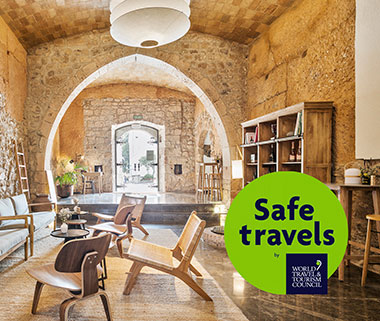This news belong to
Cavas and wines
News
Steps in the brewing process
There are various types of sparkling wines in the world, but the ones which are considered the highest quality are the ones which are elaborated following this ‘traditional method’ (which in the old days was known as ‘the Champenoise method’). Cava is one of these.
The wines are characterized by the existence of carbonic gas coming from the second fermentation which occurs in each one of the bottles resting in the cave during months or years allowing them to gain complexity. Below we explain the steps of the cava production process according to AECava (Association of Cava Producers).
The first fermentation: the base wine
The most important transformation of the must during this process to convert it into wine, is the fermentation. This process is originated by a certain type of yeast, the Saccharomyces Cerevesiae, which transforms the glucose present in the must into various components, among them, alcohol (Ethanol).
Once finalized the first fermentation, the wines go through the racking process and the clarification process, to eliminate the last remaining suspended particles and leave the wine totally clear.
The second fermentation: the ‘tirage liqueur’
Once the wines are totally clear, the enologist starts the coupage (mixing of the base wines) process which allows him to define the profile or style of the Cavas he wants to elaborate.
After this the tirage starts which consists in filling the bottles with the base wine to which the so called ‘tirage liqueur’ is added (a kind of syrup prepared with wine and sugar) along with the yeasts which make the second fermentation happen, with the object of creating foam in these same bottles.
The aging process
Once the bottling is completed, the bottles are laid in a horizontal position in the deepest part of the Caves, stacked in rimes where the natural second fermentation process begins immediately. During the aging process, the yeasts are in contact with the Cava bringing interesting aromatic characteristics.
From 18 months onwards approximately, an exclusive phenomenon pertaining to great quality sparkling wine begins, the autolysis, where the yeasts which make up the lees begin to give up components to the Cava, bringing the tertiary or the aging aromas (dry fruits, toasts, bread, toffee, caramel, etc.) characteristic of long aged Cavas.
The riddling process
Once the aging process is finished, the riddling process begins. This technique consists in moving the sediments (yeast remains) caused by the second fermentation up to the neck of the bottle. The riddling process is done to move the lees (dead yeast) so that they become concentrated in the bottle neck, leaving the wine completely clean and brilliant.
The disgorge
This consist in the elimination of the sediments coming from the second fermentation, allowing a small quantity of foam to escape which takes with it the rest of the yeasts
The dosage, the corking and the labelling
Following this and depending on the type of Cava being elaborated (Brut, dry, sweet, etc.) the dosage (liqueur de expedition) is added.
Once the sediment has been extracted and the dosage added, the final stopper is placed on the bottle: the cork. To finish, the capsule is fitted, the label put on and the control stamp of the DO Cava before the bottle is finally ready to leave the winery.


